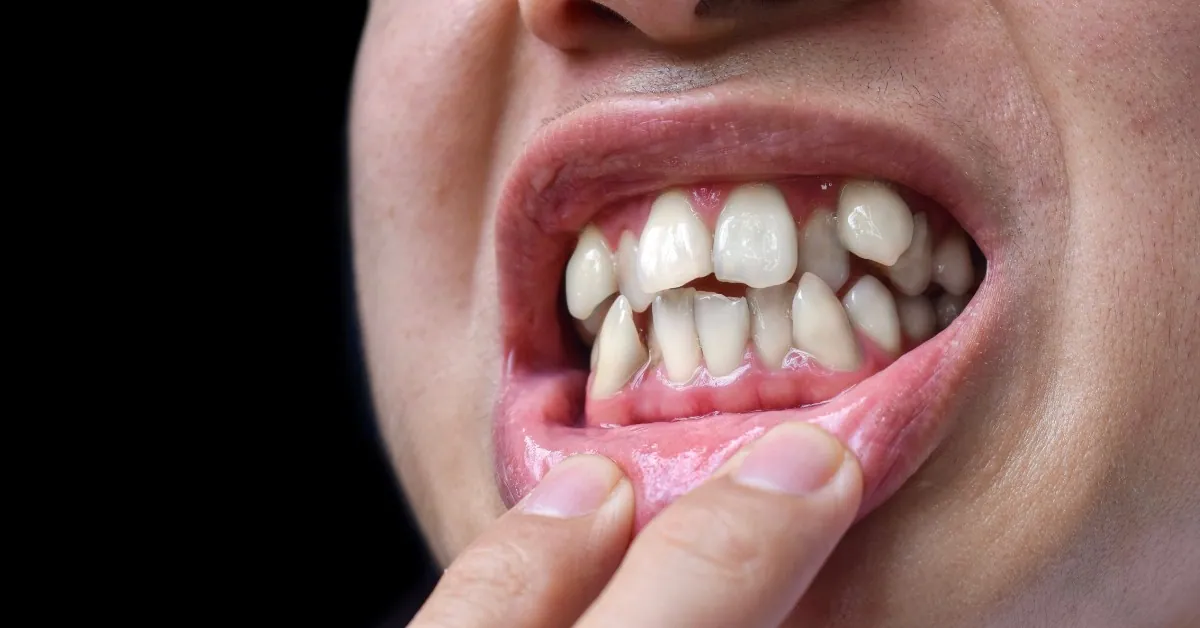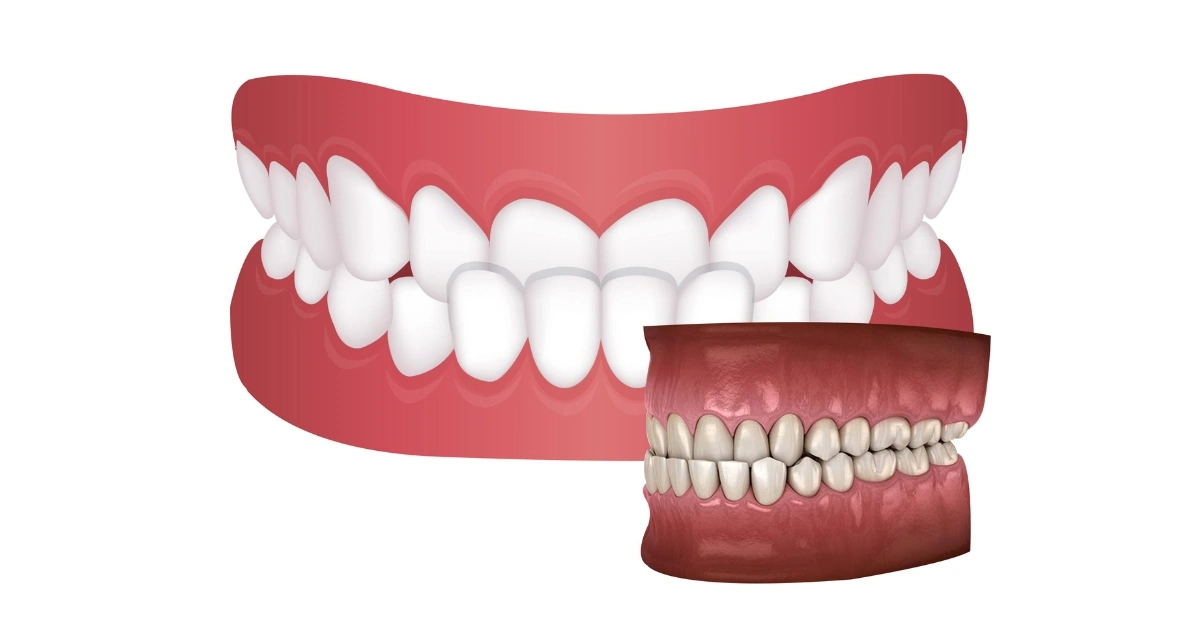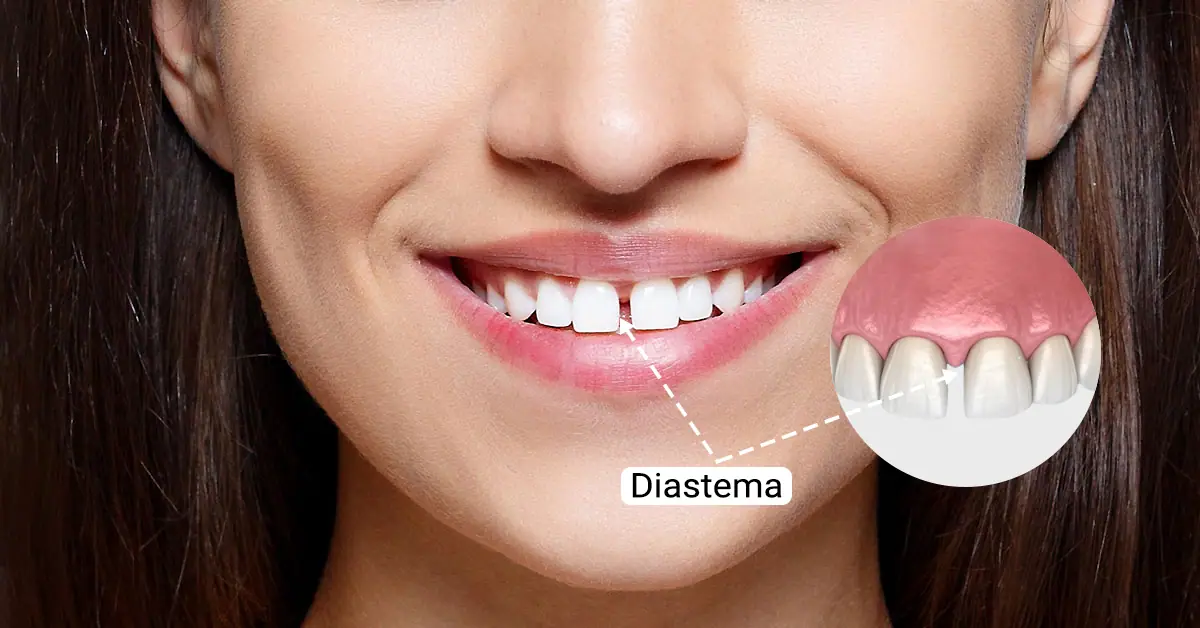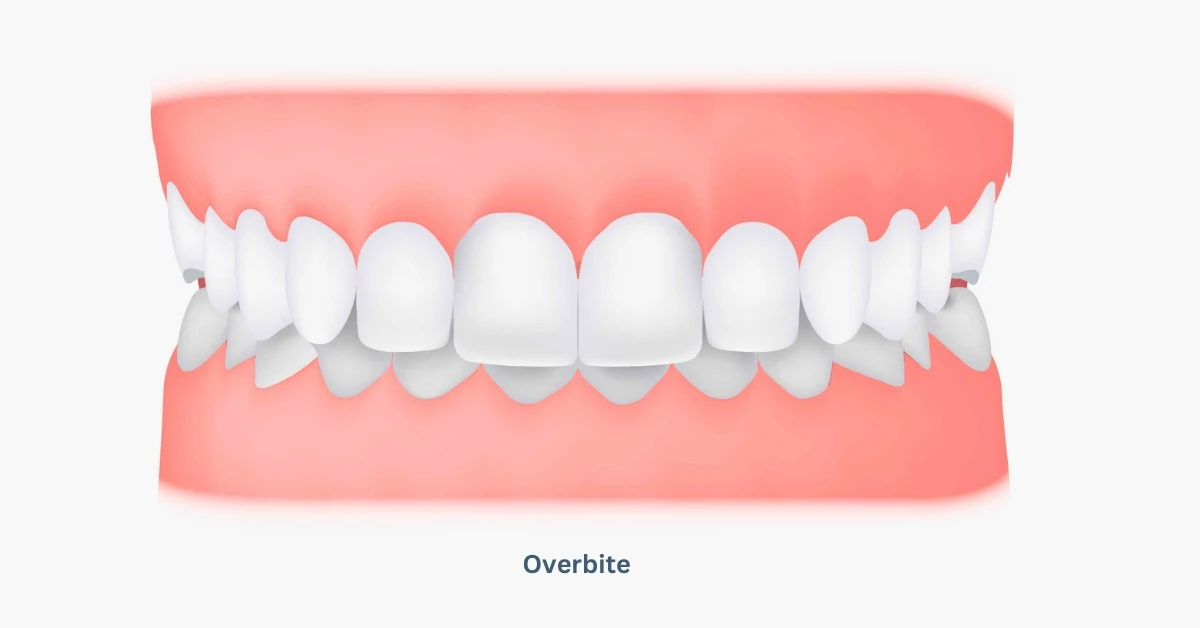Crowded teeth are the most common concern for orthodontic visits. This misalignment often occurs in childhood when the baby’s teeth begin to fall to make room for the permanent teeth. Crowded or crooked teeth are basically genetic factors in tooth alignment. However, many adults are also seen with crowded teeth. In this article, you will be provided with brief details on one of the most typical orthodontic issues: Crowded teeth and their types, risk factors of untreated misaligned teeth, treatment and cost, Etc.
What is Crowded Teeth
A common malocclusion (medical term for dental misalignment), crowded teeth look like overlapping teeth. The problem of crowded teeth occurs when the teeth inside a person’s mouth do not fit as they are supposed to and end up in being twisted, overlapped and bunched up. Teeth overcrowding is caused when the teeth and the jaw are out of normal proportions. The problem of overcrowding of teeth can be an inherited trait. Some of the most frequent causes of overcrowded teeth are:
Causes of Crowded Teeth:
Small jaw size: The jaw being too small to provide room or space for teeth causing misaligned teeth. Or vice versa, the teeth are larger than the jaw, so they do not fit comfortably. In short, misalignment in the dental arch development
Genetics and family history: Misaligned teeth trait passed on by any of the parents or other family members.
Thumb sucking or other oral habits: Childhood habits like thumb sucking or use or pacifier if continued for longer may cause such dental overcrowding
Early or late tooth loss: If the baby teeth fall too early or late it may cause several teeth misalignments.
Extra teeth: Growing extra teeth often called wisdom teeth.
Missing or broken teeth: Missing or broken teeth due to any injury or accident.
Signs and Symptoms of Crowded Teeth
Overlapping or misaligned teeth: Extra and overlapping teeth are the primary sign of crowded teeth.
Difficulty flossing or brushing: People with teeth crowding face hurdles at maintaining their oral hygiene as brushing and flossing in crowded teeth is extremely difficult.
Increased risk of gum disease and cavities: Poorly aligned teeth may cause gum disease and cavities.
Speech problems: Overcrowded teeth may sometimes cause speech impairment.
Pain or discomfort: Patients may suffer from frequent jaw pain and toothaches.
Risks and Complications:
Difficulty cleaning teeth properly: Overcrowded teeth are very difficult, especially if it’s a third-degree crowding.
Increased risk of gum disease and cavities: Minimum scopes of cleaning lead to poor oral health and increased risk of cavities, gum disease and other dental issues.
Bone loss around the teeth: Ongoing gum irritation and swelling can cause bone loss around the teeth. Eventually, this causes deep pockets filled with plaque, tartar and bacteria between your gums and teeth. If not treated, these deep infections cause a loss of tissue and bone.
Difficulty chewing: Overcrowding may also affect how we chew food, preventing proper diet and digestion.
Speech problems: Overcrowded teeth can also cause speech difficulties due to their protruding outwards. You may find it challenging to pronounce words with s or sh sounds.
Impact on self-esteem and confidence: The appearance of the patient with misaligned teeth and speech impairment may impact his or her self-esteem.
Diagnosis of Crowded Teeth:
Before finding a solution for dental overcrowding, the degree of complexity of the case being treated must first be assessed in order to offer an effective and adequate solution.
During your dental visit, your orthodontist will be able to tell you if you suffer from mild, moderate or severe crowding after an intraoral X-ray, a detailed dental study and a 3D scan.
- Mild teeth crowding: We consider this degree when there is less than 3mm missing of space in one tooth on the lower or upper jaw.
- Moderate teeth crowding: We call it moderate crowding as 2 or 3 teeth present misalignment in either the upper or lower jaw with 3-5 mm missing jaw space.
- Severe teeth crowding: We consider a case to be severe when seeing teeth placed outside the jawline and the gaps pass the 6mm mark.
Dental examination by a dentist or orthodontist:
After considering your crowding degree your doctor may re-examine your dental health and may also ask about your medical and dental history, as well as any symptoms you may be experiencing.
X-rays to assess jaw size and tooth roots:
This is an essential diagnostic tool for assessing a patient’s oral health and identifying the root of any dental issues. Dental X-rays can provide detailed images of the teeth, jaw, and surrounding structures, which can help the dentist or orthodontist identify any issues contributing to an overbite.
Models of your teeth:
Orthodontic models are physical replicas of a patient’s teeth and jaws. They can be made from dental impressions and used to study the patient’s bite and determine the best course of treatment. Orthodontic models can also plan and design orthodontic appliances, such as braces or clear aligners.
Treatment Options for Crowded Teeth:
Braces:
Your orthodontist can provide typical orthodontic treatment with traditional or metallic braces. Braces for crowded teeth are useful in correcting malocclusion. Metal brackets are placed on each tooth and connected by a metal arch that exerts continuous pressure until the perfect alignment is achieved.
Self-ligating braces:
Made of metal or ceramic materials, their brackets differentiate them from traditional brackets by enclosing the archwire without using elastics to fix the appliance.
Lingual Braces:
Lingual orthodontics is similar to traditional braces, except that it is placed on the inside of the teeth.
Invisible aligners:
A few years ago, clear aligners revolutionized the orthodontic market with an innovative system that allows patients to align and treat bite problems comfortably and aesthetically. The invisible aligners can be removed during meals and brushing the teeth for greater comfort and superior hygiene. Clear aligners have become the most popular orthodontic option for crowded teeth.
Tooth extraction (in severe cases):
Dental experts may extract one or more extra teeth to make comfortable space for the primary teeth. This procedure is recommended in severe cases of teeth crowding.
Dentofacial orthopaedics:
Severe cases of dental crowding will require dentofacial orthopaedics. This traditional treatment guides the growth of your facial bone to better align with your teeth using orthopaedic devices such as headgear or palatal expanders.
Dental surgery:
Your orthodontist may also recommend surgical options for severe dental crowding if the condition may affect your gum health and cause severe infection.
Prevention and Management:
Early orthodontic consultations: If you have identified any misalignment issues with your child, you must have an orthodontic consultation as soon as possible. Early detection and treatment can take up the rate of success.
Maintaining good oral hygiene: Always maintain proper oral hygiene by brushing twice daily and flossing your teeth. Use an antibacterial mouthwash to prevent bacterial formation inside your mouth.
Avoiding habits like thumb sucking: Prevent your child from habits like thumb sucking or using a pacifier for too long. This may develop an alignment issue for teeth.
Early intervention can reduce the need for braces later: Early intervention can reduce the chances of further treatment. So, early intervention is the key to getting rid of the disease.
How much does corrective treatment cost for Crowded Teeth?
The treatment cost of overcrowded teeth in India depends on various factors. First, how crowded your teeth are, that is, the degree of crowding, second, your age, and third, the recommended treatment as per your dental condition.
All these factors decide the procedure and cost of the treatment. Here, we may provide you with a general idea. If your condition is mild to moderate the orthodontist may recommend you metal braces or clear aligners.
There are different types and ranges of braces available in India. Metal braces may cost between Rs. 20,000 to 35,000, while Ceramic braces cost around Rs. 30,000 to Rs. 60,000. A more advanced approach than braces, clear aligners provide a much more practical and optimum treatment option for crowded teeth, which are lightweight, removable, and transparent teeth.
These invisible orthodontic devices are best for teens and young adults with a demanding and busy lifestyle. You may consult an expert orthodontist to consider Clear aligners for dental overcrowding. Clear aligners can cost you between Rs.70,000 to Rs.2,00,000 for a treatment period of 6-18 months.
Tips for maintaining good oral hygiene habits post-treatment
Follow instructions from your orthodontist:
Follow the advice of your orthodontist. Your orthodontist will provide you detailed instructions on how to take care of your teeth and mouth. To guarantee proper recovery and avoid any issues, strictly adhere to the following guidelines.
Keep your mouth clean:
Brush and floss your teeth regularly to remove any plaque or food particles that can cause infections. Rinse your mouth with an antiseptic mouthwash to kill bacteria and promote healing.
Attend follow-up appointments:
It’s important to attend your follow-up appointments as scheduled to monitor your progress and ensure that the treatment works as expected. Your orthodontist may need to modify the recommended course of action if necessary.
Avoid smoking and chewing tobacco:
Smoking might delay recovery and raise the possibility of problems. Similarly, chewing tobacco can put extra pressure on the teeth and gums, slowing down the healing process.
Visit your nearest dental clinic without hesitation:
Your oral health plays a dominant role to keep you healthy. You should run for a dental checkup at a reputed dental clinic near you whenever you doubt your dental health.
Final Verdict
Crowded teeth, a prevalent dental condition worldwide, often manifests with noticeable symptoms. Timely intervention from a qualified medical professional can effectively resolve dental issues, misalignment, and any other dental arch issues, restoring dental harmony and promoting a healthier smile as well.
If you are experiencing any difficulties or issues related to your dental health, feel free to seek an expert’s advice. A qualified, licensed orthodontist will surely be helpful in resolving your dental glitches.
FAQs
There is no safe way to correct crowded teeth without a doctor’s consultation. You should visit an orthodontic clinic if you experience any signs or symptoms of Crowded teeth.
Crowded teeth treatment basically involves orthodontic devices such as braces or clear aligners. These treatment options may take time and are not painful, but a surgical or tooth extraction procedure might be painful.
Based on your age, concern, various treatment options including braces, clear aligners etc dental appliances can be recommended to correct most of the overcrowding issues. However in severe cases surgery or teeth extractions are also suggested.
Whenever you notice the signs and symptoms, you should consult your nearest dentist without wasting time.
The treatment of overcrowded teeth with braces may take about one year to three years to bring the teeth into perfect shape and place. Treatment with clear aligners involves a lesser period of treatment, between six months and 18 months. If you are having any surgery, the recovery period may vary from several days to a week or even a few months.
References:







